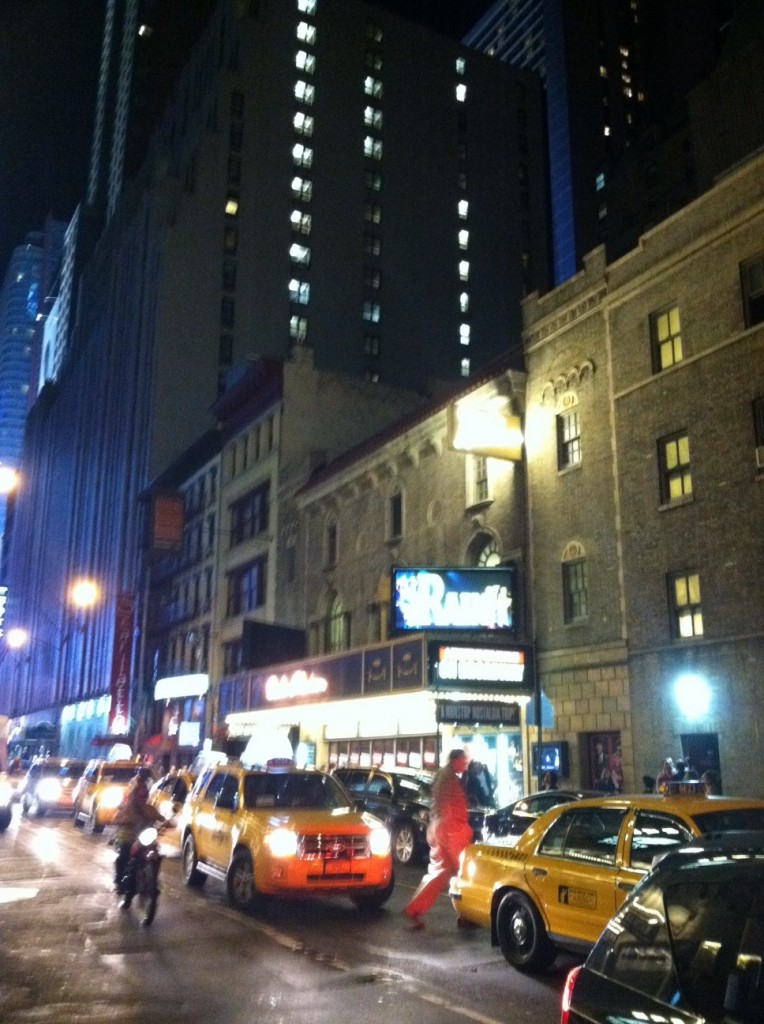My second-ever blog post, “How do you get (people) (in)to Carnegie Hall?“, was about how I walked by an Abercrombie & Fitch and could feel the air-conditioning on the street. Consequently, I wanted to go inside. Here’s what I wrote, lo those three years ago:
…after narrowly avoiding Abercrombie I thought, when have I ever passed a performance venue and had a desire to go inside? I walked by Carnegie Hall every day on the way to work at IMG, and never once did I see, hear or feel anything that made me want to go into that lobby. I walked by the Miller Theatre yesterday, or, at least I think I did, since I didn’t actually notice it in the mass of Columbia. There’s no effort toward creating a sensory experience: nothing to turn my head, let alone my feet. Moving beyond heat lamps and AC, what can venues do to get people in the door?
Give us some idea of what’s going on in there, most basically and importantly. It’s “Carnegie Hall” ((jazz hands)), but do people know the range of artists Carnegie presents? The posters wrap around the building, so unless you’re circling the block, you’re going to miss a lot of information. What needs to be pumped into the street outside Carnegie and any music venue, is, errrr, music. If I was walking along 57th street and heard past performances playing under Carnegie’s awning, I would stop and listen, probably every time. Ideally, there would be a screen outside the doors detailing who/what/when you were listening to, along with another screen scrolling the upcoming performances. Obviously, the rights for such a project would be a mild to moderate nightmare, since a lot of artists only allow their live performances to be recorded for archival purposes. If you can’t play concert recordings, work with the record labels and play CDs from the artists on the season. Play stock music – just connect with the hundreds of people who walk by your building every day. (Incidentally, our cool friends at Abercrombie & Fitch are also known for blasting music inside and outside their stores.)
I saw Master Class, which opens on Thursday, in previews this weekend. It’s kind of a why-does-this-need-to-be-a-play play, but Tyne Daly is terrific, as is Real Live Opera Singer Garrett Sorenson, who got a bigger applause than his two co-stars hailing from Andrew Lloyd Webberville.
After the performance, I was standing outside chatting with friends, and I heard Beatles music coming from across the street.

All day, Rain: A Tribute to The Beatles, plays–you guessed it–The Beatles outside their theater. Why then, if there is a play about an opera singer across the street, isn’t that theater blasting Maria Callas? I’m sure there are rights issues and possibly money issues, but at the very least, could the recordings they already licensed for the production be played outside? Tyne Daly, outstanding as she is, does not look like Maria Callas. Frankly, I’m not sure most people under 50 would recognize Maria Callas if Tyne Daly was her long-lost twin sister. The words “Master Class” don’t say “opera” or “Maria Callas” to anyone who’s not already familiar with the play, just as the word “Rain” doesn’t necessarily scream “The Beatles” to anyone just passing by. Give people a reason to stop outside the theater and see what the play is all about. Ensnare them with her voice: a voice that was, apparently, so special and powerful that it justifies a 2+ hour play.
In Manhattan Theater Club’s defense, they do have a promo video playing outside the theater. Again, though, why not show real Callas interviews and performance footage? I have to believe people would stop to watch this:
Or this real-world soap opera:
If I were her publicist, by the way, I would have LOCKED THIS INTERVIEW DOWN. Girl has got it under control, though. Actually, this is How Not to Get Baited By A Reporter 101. Wonderful.
But I digress. We’re on sensory overload in this world; performing arts venues should at least try to compete.

You know that weird area underneath the Barbican between the St John restaurant and the silk street entrance? I’ve been saying for YEARS that they need to put some promo video shit down there. Even just a video of David Lang talmbout “Hello, I’m David Lang”
Amanda, your general point – “We’re on sensory overload in this world; performing arts venues should at least try to compete” – is a very good one, of course.
But the particular case of Master Class may not be so simple.
Why not show real Callas interviews and performance footage outside the theater? Because reminding the potential audience how little the real Maria Callas resembles Tyne Daly might not be the best idea.
Besides that, there are plenty of people who simply hate the sound of operatic sopranos, period. Why risk putting them off? (Especially since there’s little operatic singing in the play itself.)